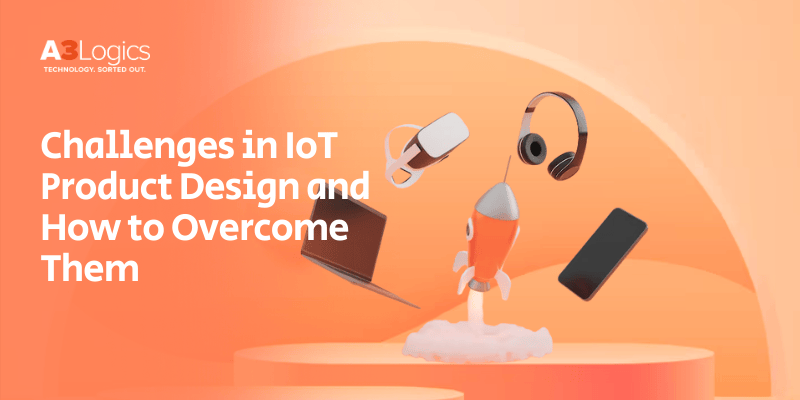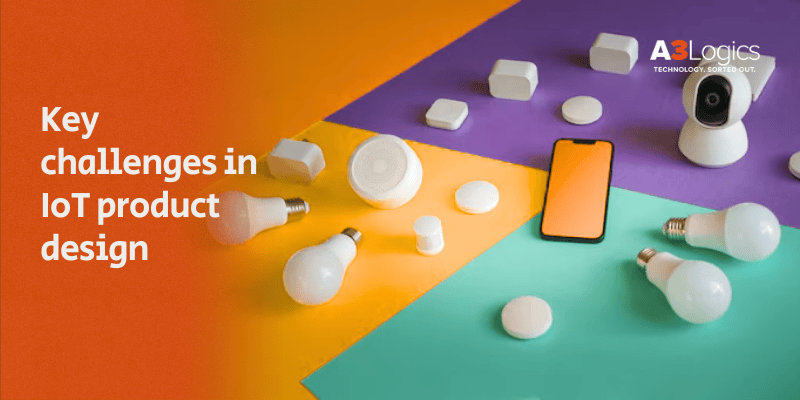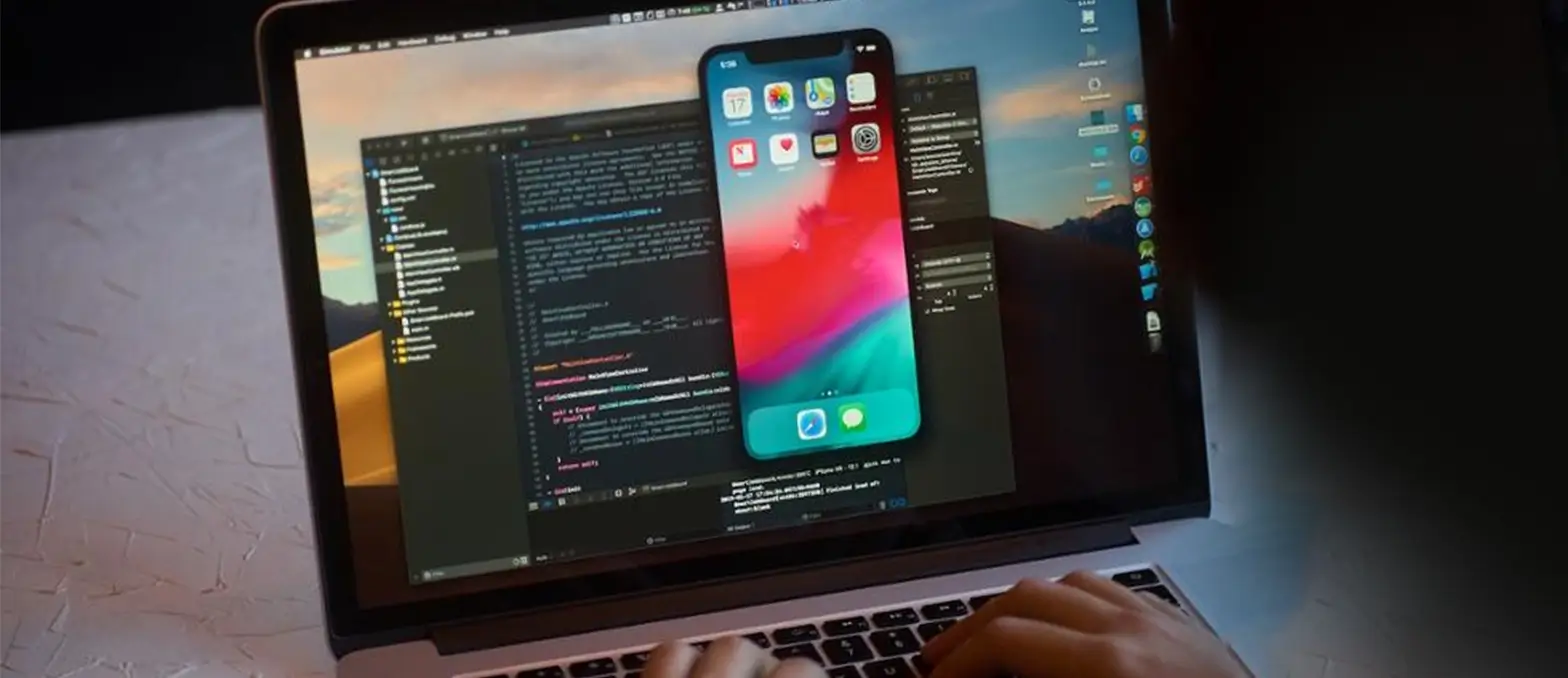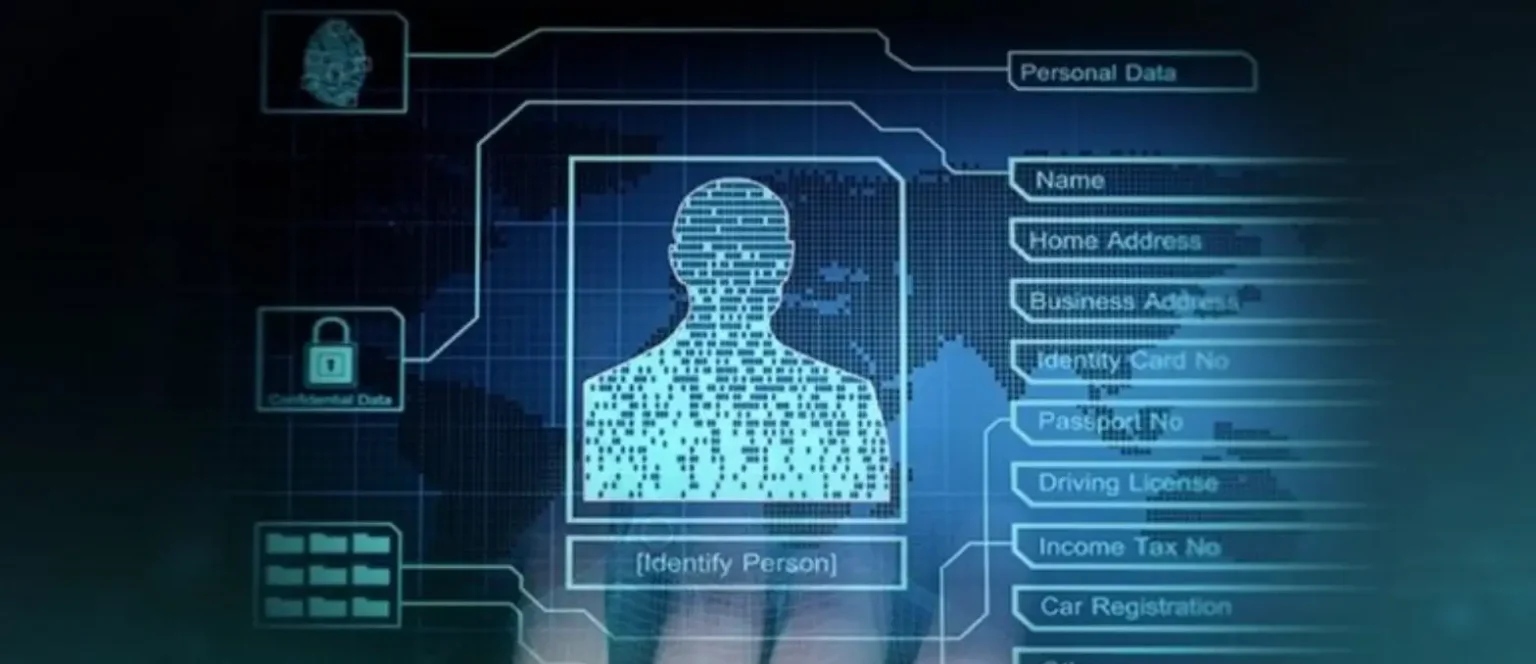Table of Contents
Overview of IoT in Product Design
The IoT (Internet of Things) is reshaping IoT in product design by allowing gadgets to interact over the internet. Such an interactive channel helps products improve their functionality and offers features that enhance user experience. From healthcare devices and home automation systems, to wearables, IoT assists products in operating effortlessly by sharing real-time data.

Designing an IoT-powered product calls for an integration of software and hardware. It typically involves an analysis of sensors, network modules, cloud platforms, and processing units. The ultimate objective is to develop devices that not only accumulate information but also communicate with users and their ecosystem. For instance, in smart homes, IoT product design services can toggle lighting, security settings, and temperature, depending on real-time inputs.
However, there’s a lot more to product design than its core functionality. IoT products also need to be environment-friendly, safe, and easy-to-use. With a constant rise in the market of connected devices, problems such as information security, device interoperability, and network scalability, have become essential. Therefore, the development and design of IoT products must be focused on solving such issues while offering value to the end users, ensuring that the product is efficient and reliable.
Components of IoT Product Design
IoT in product design goes miles beyond the creation of a functional device. It demands an unparalleled integration of a wide range of components that work in synergy to guarantee top-tier performance. These components shall all work together in unison to match the user expectations and offer secure, efficient, and reliable operation. When it comes to the overall functionality and precision of an IoT framework, all of these components seem to be equally important.
1. Controllers and Sensors
Sensors, as we know it, are critical for all identification-related purposes in the IoT environment. Some of these purposes or objectives include controlling or tracking factors such as motion, and temperature. Business usually get into collaborations with an IoT development company to keep a check on the usage of the above-mentioned factors. This helps them track a certain level of usage and put a stop as and when required.
2. Networking Components
These are the components which are responsible for communication that happens between IoT-powered gadgets and other devices via the internet. There are also channels other than the internet that come into play including Bluetooth, mobile phone networks, and more.
3. Data Processing Core
The core processing unit is leveraged for the management of information collected by sensors and pulling out useful information or patterns from it. It utilizes the software, analyses the data, and sends instructions to actuators on a real-time basis. IoT product design, through the core, guarantees that the devices operate as intended by the user, via processing and controlling of the outputs.
4. Power Source
Since most of the IoT gadgets and devices run on battery, the power source is becoming an important component of IoT product design. The devices of gadgets being used on-site are either battery-backed or run on energy sources like solar-power or motion detection. It is also important to consider the amount of energy that is being used as well as timely replacement of batteries, to ensure uninterrupted functionality.
5. Cloud Hosting
IoT frameworks usually transfer information gathered to cloud platforms for further processing, analysis, and storage purposes. Cloud hosting allows for remote control of devices powered by IoT in product design and offers real-time data monitoring. It also helps with big data analysis, thus, improving system performance through the processing of huge volumes of data gathered from several gadgets.
6. UI (User Interface)
The UI or user interface is how the communication between the IoT device and the user takes place. It could be carried out with a web interface, voice commands, or a mobile app, that permits users to configure, monitor, and manage their IoT gadgets. A well-crafted UI is one which ensures intuitive and easy interaction among both parties.
7. Security Mechanisms
When speaking of security, it happens to be the topmost priority for IoT in product design. It helps businesses protect their devices from unauthorized access and also keeps vital info or data safe. There are a variety of IoT safety features that help protect against cyberattacks of all kinds. Some of the features include firewalls, advanced encryption, and multi-factor authentication.
8. Physical Enclosures
Outer casing would be the last thing on anyone’s mind when speaking of IoT gadgets. But it’s difficult to ignore when considering that the productivity of your business may be directly proportional to the life of these gadgets. The physical outer case usually determines how long a device will survive, depending upon factors like weather resistance, durability, and more.
Key challenges in IoT product design

One simply can’t discuss the landscape of IoT frameworks and not talk about IoT product design challenges. Needless to say, IoT development comes with its own set of challenges that can’t be ignored. These challenges could range from data safety to power consumption, and beyond. It’s important for a business to find resolutions to such challenges to maintain the balance between business profitability and overall customer satisfaction. Let’s check out the IoT product design challenges that business face most frequently:
1. Limited battery life in IoT devices for IoT Product Design
The majority of IoT-powered devices, particularly sensors and wearables that function in hard-to-reach or remote areas, depend heavily on batteries for power. However, battery life can prove to be a concerning factor, as it calls for routine recharges or replacements. To solve this issue, IoT experts make use of low-power interaction protocols, power-saving components, and energy-efficient modules. Moreover, energy harvesting methods such as solar charging, can help stretch out battery life for some apps.
2. Protecting data while maintaining ease of use
IoT frameworks manage sensitive information, like personal preferences or health metrics, making it one of the top IoT product design challenges. However, robust security protocols such as secure authentication and encryption can further compromise the user experience. Maintaining the perfect balance between ease of use and data protection is the key. Ensuring that security protocols are non-intrusive helps users fully embrace the gadget’s features without compromising data security.
3. Creating durable devices that withstand various environments
IoT devices are more often than not, rolled out in harsh environments, like outdoors, in medical settings, or in factories, where they get exposed to severe conditions such as extremely high or low temperatures, water, physical impact, or dust. To deal with such IoT product design challenges, these gadgets must be built for longevity, using tough and weather-resistant materials and must undergo rigorous testing to meet quality standards. This ensures that the IoT product continues to operate unfailingly in various environments.
4. Balancing advanced features with user-friendly interfaces
Ease of use is something that everybody wants. IoT devices being the complex frameworks that they are, hold the potential to make users feel intimidated by its capabilities. Some of its features may also go the distance to make the user feel confused and stressed. That is why it’s highly important that coding experts come up with user-friendly designs that help with easy navigation. To solve this kind of IoT product design challenges, user-friendly layouts shall be preferred, to enhance the accessibility of IoT-powered frameworks to everyone.
5. Meeting global regulatory requirements
IoT devices need to fall in accordance with a wide range of rules and regulations across several regions, including data security rules, privacy laws, and communication benchmarks. As these regulatory bodies keep changing the landscape, it has become more crucial than ever to stay up-to-date with these requirements to ensure compliance. Achieving the required certifications, like FCC, GDPR, or CE, is important to ensure the IoT product can be marketed and sold globally without legal hassles.
How to Overcome IoT Product Design Challenges
IoT product design and the challenges associated with it always go hand-in-hand. After all, you can’t think of building something that useful and assume there’d be no problems. There happen to be a variety of IoT product design challenges that can negatively impact its overall performance.
To deal with such problems, it’s important that you know how to build solutions that are not only efficient, but also highly secure. By implementing the ideal approaches, IoT-powered products can unlock hidden potential, ensuring they match user requirements and comply with regulatory standards.
Streamlining Power Consumption
To resolve the problem of limited battery life, developers can opt for low-power processors and sensors that work with minimal power. Various modes like power-saving mode or sleep mode are unbelievably helpful to cut down on power usage when not in use. Moreover, a wide range of energy efficient frameworks can be used for IoT product design, such as Bluetooth Low Energy, Solar Panels, and more.
Improving Security for IoT Product Design
Security is one of the most important aspects of IoT-based products as they manage a lot of sensitive information. To address this concern, encryption protocols must be utilized to protect information while transferring or storing. Timely software updates are also crucial to repair vulnerabilities and patch security loopholes. Moreover, implementation of MFA (multi-factor authentication) reinforces access control, and opting for a zero-trust safety model ensures that devices are constantly checked to dodge cyber threats.
Ensuring Longevity
An IoT development company also needs to ensure that IoT devices don’t face severe conditions like extreme temperatures, physical shocks, or water exposure. To ensure dependability, rugged materials shall be used to make the devices moisture-resistant, dust-proof, and resistant to fluctuations in temperature. All-encompassing environmental testing needs to be carried out to ensure the gadgets operate efficiently under diverse conditions. Additionally, sealing the device and choosing elements that are particularly certified for certain environments also enhances overall lifespan and durability.
Building User-Friendly Interfaces for IoT Product Design
Even though IoT frameworks now showcase advanced features, their UI (user interfaces) must remain easy, responsive, and intuitive. During IoT product design, creating a well-balanced UI assists users in navigating across sophisticated systems without any hassle. A minimalist and clean design with basic icons, touch-based mobile apps, or voice control, makes the experience more accessible. Ensuring that the interface stays easy to use is important, particularly for non-technical audiences, while still providing complex personalized features.
Alignment with Regulatory Requirements
Following international regulatory requirements is important for ensuring IoT frameworks can be sold internationally. Developers must stay up-to-date with the dynamic standards related to data safety, privacy, and wireless protocols. Ensuring compliance with global certifications like UL, FCC, or CE, is crucial to dodge legal issues. During IoT product design, routine testing of the interlinked gadgets shall be conducted to ensure a smooth entry into global markets and ensure product reliability and safety.
Future Trends in IoT Product Design
The future of product design in IoT is set to introduce revolutionary technologies that will improve user experience and device performance. These upgraded frameworks are all set to bring increased responsiveness, eco-friendly systems, and automation capabilities.
As we carry on with our lives, these technologies are growing smarter and more efficient, changing how we look at things completely.
ML and AI Integration
As IoT product design becomes more sophisticated, ML and AI algorithms are increasingly welcomed. The blend of these two technologies assists devices in making real-time decisions based on information gathered, promoting better automation. By picking up findings from user preferences and behaviours, IoT products can provide customized experiences, streamline performance, and even forecast future requirements. This leap in processing will make IoT frameworks more responsive and adaptive to user interactions.
Edge Computing
Edge computing helps in processing data right next to the source, instead of transmitting all of it to the cloud. This minimizes latency, allowing IoT devices to be proactive in real-time apps, like autonomous vehicles or healthcare monitoring. With the help of data analysis at the edge, IoT gadgets can engage in rapid decision-making without having to depend on servers that are located far off. The output is a faster, more effective integration of IoT in product design, particularly in critical circumstances where each second matters.
5G Technology
The introduction of 5G connectivity will considerably improve the performance of IoT frameworks. With rapid data sharing speeds and more dependable bandwidth, 5G allows IoT gadgets to interact seamlessly. This technology will also contribute to projects such as smart cities, where huge volumes of information have to be analyzed in real time. Whereas, in remote healthcare, the network technologies boost data transmission required for effective medical interventions.
Sustainability Practices
IoT devices in the future will leverage renewable energy sources like kinetic energy or solar panels, to power their operations. This trend will help minimize electronic waste and reliance on disposable sources of power for IoT in product design. By pulling energy from the natural environment, these devices will be able to function without depending on batteries. This will make IoT devices more environmentally friendly and also extend their functional lifespan in remote regions.
Robust Security
With the growing number of IoT devices, security concerns are also picking up the pace. To protect apps against cyber threats, IoT products will adopt robust security measures in the future, including blockchain technology, AI-driven security solutions, and strong encryption protocols. These technologies will provide real-time threat identification and prevention, ensuring that information and gadgets remain protected. As the market for IoT continues to branch out, more businesses are looking to hire IoT developers to build custom security solutions.
Conclusion: IoT Product Design
IoT product design plays a significant role in developing cutting-edge IoT devices that provide improved user experiences and enhanced functionality. However, challenges like security, battery life, user interface, durability, and design need to be resolved effectively to unlock its true potential. Through the integration of high-tech solutions and focusing on user requirements, developers can address these issues and generate successful IoT products.
As technologies grow in the landscape of IoT, the integration of edge computing, 5G, and AI, will reshape the capabilities of these devices. When seeking innovative solutions, reaching out to an IoT product development company is a great choice. It offers the professional assistance required to develop cutting-edge gadgets. Overall, as more businesses adopt IoT solutions, the innovation potential grows exponentially, enhancing several aspects of our routine lives – from transportation and healthcare to smart homes and beyond.








